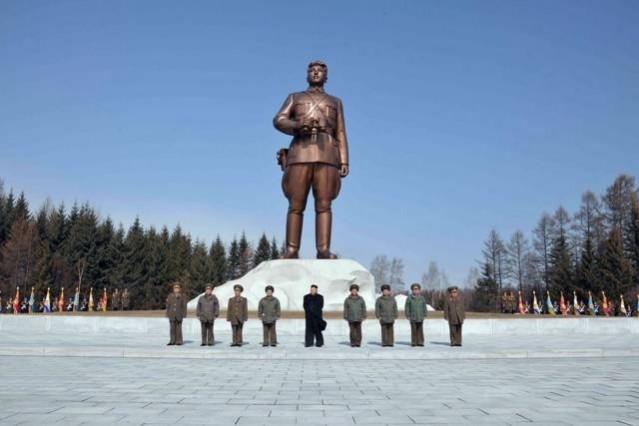
North Korea seems to have developed significant level of technology and expertise for miniaturised nuclear warheads to fit into Intercontinental Ballistic Missiles (IBM) that have the capacity to reach the US mainland, officials from Seoul confirmed on Tuesday.
South Korea's defence ministry said citing the 2014 edition of the ministry's biennial white paper released on the day that the reclusive regime seemed to be doing everything to arm themselves with nuclear weapons. The paper is an extensive study highlighting Pyongyang's evolving nuclear missile threats to the region after its third and most recent nuclear test in 2013.
"North Korea's capabilities of miniaturizing nuclear weapons appear to have reached a significant level," the paper said as quoted by South Korean Yonhap News Agency. "North Korea is presumed to have secured some 40 kilograms of weapons-grade plutonium by reprocessing spent nuclear fuel roads multiple times, and it is evaluated to have been working on the highly enriched uranium program."
The paper is the first-of-its kind report, which summarises a technological analysis of the North's nuclear programme beyond simply outlining the communist nation's underground nuclear testing.
Although Pyongyang has not yet demonstrated capability of nuclear miniaturisation, experts from Seoul are of the view that the country has already built the technology for nuclear-tipped IBMs.
The paper further adds that South Korea has assessed that North Korea has "... (missiles) capabilities that could threaten the US mainland, having fired off long-range missiles five times."
The South Korean news agency quoted an anonymous ministry official as saying: "We don't have any intelligence that North Korea completed the miniaturization. In consideration of the fact that acquiring such technology takes around two to seven years in general and eight years have passed since the North conducted its first nuclear test, however, its capability for small nuclear warheads would have reached a significant level"
Based on the North's successful launch of a satellite into orbit on an Unha-3 long-range rocket in December 2012, Western intelligence had already gathered that North's Taepodaong-2 long-range rocket has a range of about 10,000km – which means Washington is within an easy range, if Pyongyong ever chooses to "reduce it to ashes" as the Kim Jong-un regime has repeatedly warned in many occasions.
While South Korea only has around 6,30,000 service members, its Northern counterpart has over 1.2 million regular service personnel.

















